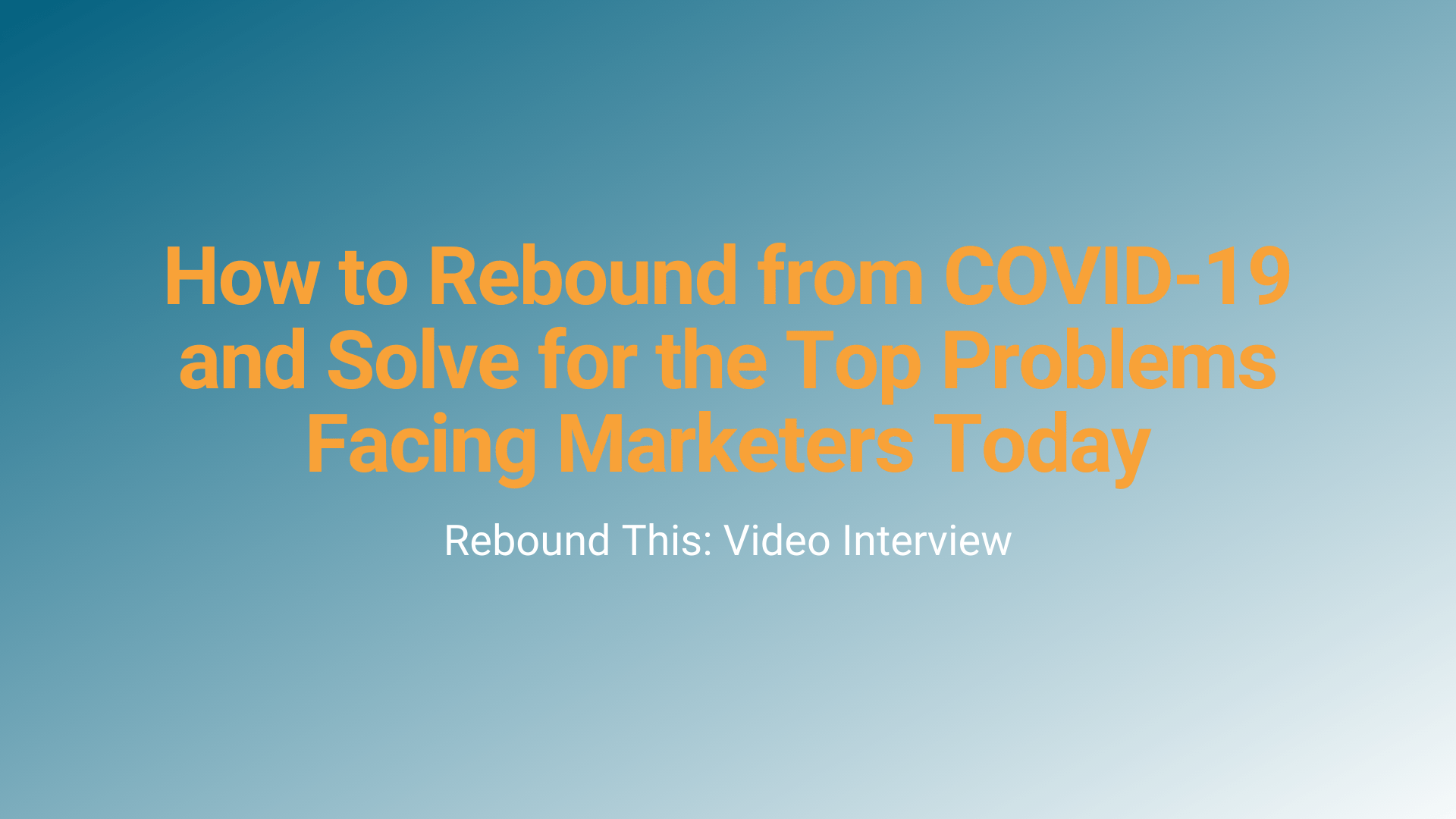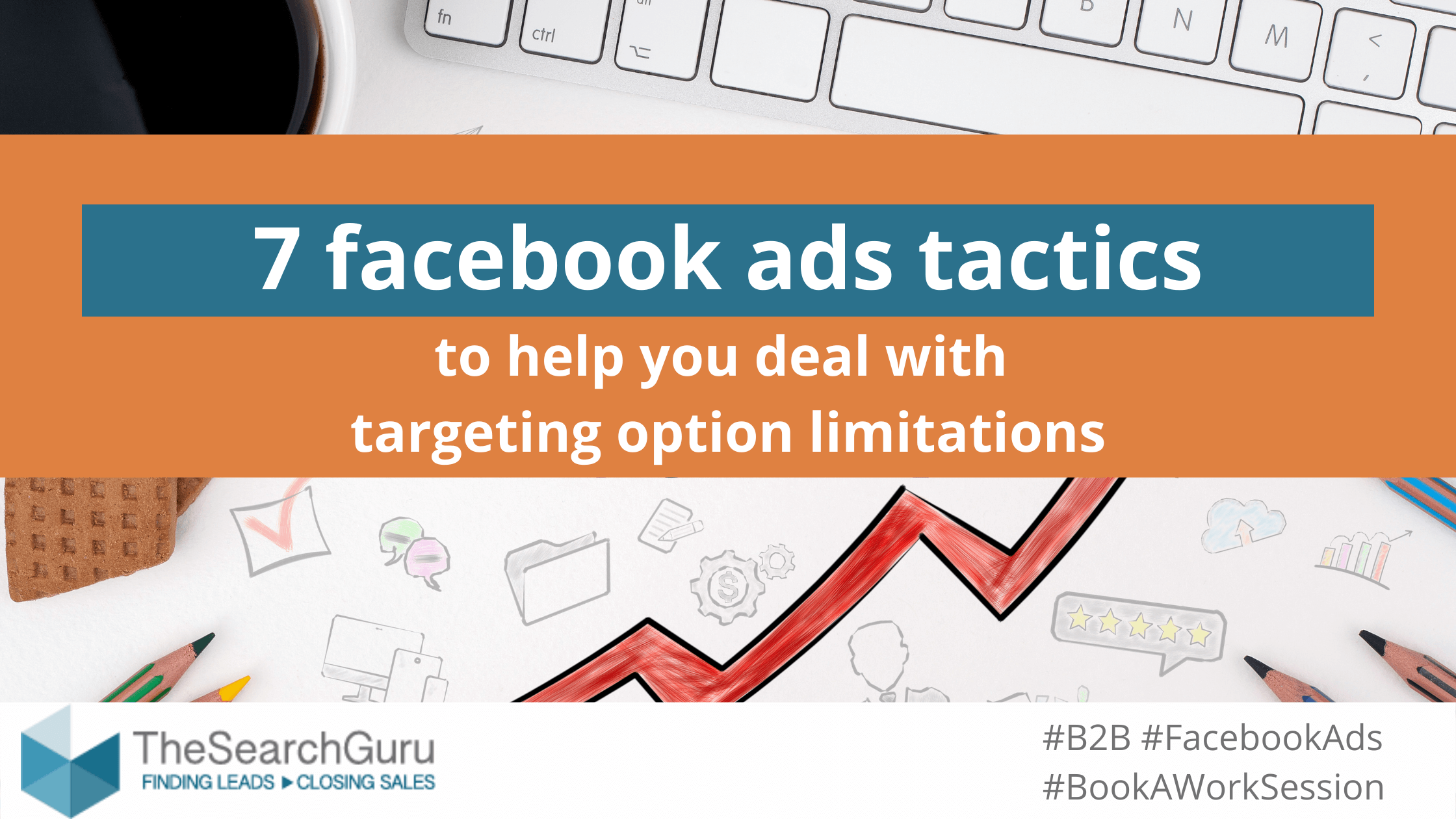Leslie Carruthers: You’re dealing with one, two, or maybe all of the top problems of content marketers and SEO professionals:
- The first is lack of resources.
- The second is not being sure what’s producing results.
- And the third is time to results.
We are here to solve those problems inside of the conversation of how to prepare for the rebound. We’re talking with top content marketers and business leaders about how to prepare so that we can come out the other side of this better, stronger, faster. You’re not alone, and we’re gonna get this handled. I’m so excited today. We have Sergiu Simmel with us. Thank you so much you for playing today.
Sergiu Simmel: You’re welcome. Thank you. Thank you for having me, Leslie.
LC: My pleasure. Sergiu is an EOS (Entrepreneurial Operating System) implementer. And both a Predictive Index (PI) and Kolbe certified partner. He serves the lower to mid market and has shepherded more than 70 companies through the EOS process. You can find more from Sergiu – some great content at GetBusinessMomentum.com. And he’s actually my EOS implementer, too. So thanks for all the guidance, Sergiu.
SS: And the pleasure of working with you and your team, Leslie, such really special and extraordinary people.
LC: They are great, aren’t they? Yes, thank you very much. I agree. I couldn’t agree more. So I’d like to hear from you, because you are in the unique position of getting to work with so many different companies in that mid to lower market size. What are you seeing are the positives coming out of this experience? Of this COVID-19 experience?
SS: Well, there are lots of positives. And when I see say this to people, they tend to look at me and say, well, you know, what have you been smoking today? Because they are so hunkered down in this mode of dealing with stuff. But yes, and I say we are all dealing with the constraints and the limitations and the frustrations at times of the situation. But there are lots of positives.
So one thing from my perspective, being an implementer of a system that essentially runs low mid market companies is that, when resources and markets shrink the merits of having an operating system that actually helps operate the business more efficiently, more effectively, essentially will come up to the surface. Because when you have more resources than you need, you have a lot of room to essentially make mistakes and nobody will notice because profits are high, markets are growing and so forth. So that’s one thing.
LC: So the business growth covers up for weaknesses.
SS: Exactly, exactly. And then the other side is also the side that has to do with people. You know, when you need to actually shrink, for example, somewhat, your organization, or you’re looking to figure out, you know, what kind of organization you need for the next stage or for the rebound, as you call it, Leslie, again, the need to actually have the right people in the right seats. And as you know, we have a lot of tools in EOS that are focused specifically on that. And then of course, we add the Kolbe and the Predictive Index tools to empower us to really have the right people in the right seats. All that stuff becomes much more important now, and again, much more relevant to how we operate the business.
So that’s the second thing that the third, you know, kind of silver lining to this is that, which is a totally different area like when you’re dealing with customers and in the past, most of the way I’m dealing with customers most of the time is through these day-long, onsite or physical sessions. I will fly to Akron, Ohio, for example, where I have a couple of customers including some of your friends, and instead of spending the day with a leadership team. So now, of course, that is not happening so people have become much more accustomed to actually be receptive to dealing with people like myself virtually. And that has been actually discovered for my people. In fact, you know, one of my clients told me something very interesting. This, the couple of the people on the leadership team were very reluctant to move to do this virtually. And in fact, they were kind of hoping that this thing is going to finish really soon, so that I can go back and actually meet with them physically. And I said to them, no, no, it’s important to keep the rhythm on. So reluctantly, they accepted. And we broke the session instead of a full day in front of a screen. We broke the days in a couple of pieces. At the end, one of the shares what they observed, they were the same people, was that Oh, my God! In fact, not only that this is working much better than I expected, but I think I would like us to continue to do this forever, virtually, because all of a sudden, they saw there are aspects of of this work that are much better done in smaller, shorter mini sessions like say three, four hours a day for a couple of days as opposed to a nine hour one one time sittings.
The Positives from the Crisis
So, so there are actually three things at least that I see as positives or silver linings to the pandemic situation:
- First is about company’s strength, especially on the operating sites. So people are starting to realize when resources and market shifts, that it is more important for the company to actually function very well.
- Second, is about that people inside a company when the staff either shrinks or even this stays the same or even if it grows, the need to actually make sure that you have the right people in the right seats becomes substantially more important.
- And thirdly, is that people who historically have not been very, let’s say, accommodating to doing work remotely, all of a sudden, they’ve noticed that, in fact, in some aspects, especially when they’re dealing with, you know, EOS implementers or coaches like myself, doing things remotely has its merits that in some areas work even better than having to spend a full day in the same room.
LC: Great, yes. And it certainly is easier when there’s abundance of resources, market share, prospects; we don’t see those weaknesses in our companies as clearly as we see them now. So it’s a great time to do some housekeeping and examine – do we have the right people in the right seats and especially if part of the team has been furloughed? Knowing the resources that you have. I understand that’s what the predictive index tool does, helps you understand what people are geared for. So you’ve got the best shot to have a strong rebound.
SS: Great.
LC: Awesome. So do you see anything then that’s possible for people now because of the COVID-19 experience that wouldn’t have been if we hadn’t had it? Or weren’t in it?
SS: Well, we learn new skills that otherwise most people, including business coaches and consultants, like myself, just wouldn’t do because we were busy delivering our services. There are facilitation skills for example, that we have to learn and sharpen that. Apply to working with people virtually that normally we wouldn’t have because we will mostly work with people in the, you know, face to face. There are ways of actually structuring our products and services in a way. I’ll give you just one simple example. In the system that I implement for my clients, we have these 90 day cycles. Well, 90 days in this particular context is a long time. So one thing that we learned is that, you know, maybe we can take that cycle and break it down into two pieces of 45 days. So instead of being a quarter is an eighth. Well, it actually works out very well. Now, I’m not saying that we will shift from 90 to 45 forever. But when things happen at such as speed, you have to be actually mindful of what you’re doing and this is something that to answer your question straight, Leslie, I don’t think I would have ever, ever considered unless I was forced to like we are right now. So it’s just the two simple examples of that.
LC: So pivots can create opportunities as you’re adjusting to rapid change. Yeah. Then chaos in some instances and overflowing demand and others. Yeah. Great. Got it. Okay. So what have you or your peers, your other EOS implementers and client teams and organizations that you are serving? What are you seeing on the court that they’re doing to prepare for and be in a great position for the rebound?
SS: Well, a number of things. So for example, in my business, one of the things that I have a shift or pivot that is somehow this verb has become the most favorite word in the English language the most people in business. I took a look at what would be a service that can actually help people with an issue that they’re facing with right now, right here.
People are Facing a lot of Change very Rapidly
And one of the things that occurred to me is that people are facing a lot of change very rapidly. Both business strategies, as well as people don’t have to get into any details, you understand what kinds of changes? So the question is, well, when you change everything all at once, are those things actually in sync with each other? So that you can guarantee that when you come onto the rebound, let’s say three months from now, six months from now, is this company actually going to work the way you expect?
It turns out that Predictive Index has a tool and a whole infrastructure to give you a science based assessment and a facilitation basis to solve exactly that, that question so that you are not walking into this with your eyes closed. So I package that as a new service. And I’ve been actually getting a lot of traction because people see yes, that’s exactly the kind of issue I’m dealing with, because I have no idea where I’m going with this. You know, I mean, I’ve never had to change things so fast in so many directions all at the same time. So that’s one example of, you know, you have to re examine what is it that you are actually putting out there that doesn’t mean that it subtracts from other products, but you just put something in more of a, you know, in the light, because that actually responds to the reality.
Today, so that’s one thing you know, preparing for them and, and spending time and energy on creating a marketing machine that fuels lead generation that fuels business development activities. You know, the conversations are also something that a lot of people put a lot of efforts on. And the reason is that, yes, maybe right now people are less inclined to close business right away depending on what you’re selling. But once we start getting into a rebound, that’s basically what you need to have very, you know, functioning very well. So fine tuning and completing your marketing machine which may not have been your, your, you know, priority three months ago. Obviously becomes interesting enough, a very, very high level of priority. So that’s something that many people are working on quite a bit.
LC: So, Sergiu, what are you seeing your clients? What skills are they learning that will serve them in the rebound?
New Skills
SS: This skill of being agile, that, you know, when an issue rises to the surface, and the leadership team says, boy, you know, this is something that’s biting us in the ass and don’t put on, you know, what we call in the EOS, you know, on the parking lot, we are going to deal with it some other time. You have to actually go and solve it right away, even if the solution is not perfect. There is a category of leaders that tend to want to come up with a brilliant solution – the long term solution. That’s great.
But right now, we also have to have a solution that would work at least partially right now. So that’s one skill that many people can see actually, like you said earlier that the weaknesses and might be a weakness at a company if they didn’t have agility or be able to cause themselves to move quickly or change quickly that this is putting a spotlight on that. So they’ve been forced to grow that skill. Yeah.
And along those same lines, Leslie’s also looking at the relationships among the members of the leadership team or among the people in various teams and so forth. And while in the past, maybe people were more likely to be willing to tolerate, you know, friction or knots, so functional teams can tolerate some level of dysfunctionality, you know, you can’t afford that anymore. You cannot afford, you’re not going to survive if your leadership team, for example, is dysfunctional. Because it’s in the same category with what you were saying a minute ago, Leslie, you know, yes, dysfunctionality is, as you know a weakness. But now that weakness may be fatal.
LC: Because you’ve got to get people on the same page so they can actually march and, you know, they really can lead the rest of the organization in a coherent way. And that’s more important than ever, I know. So you’re seeing that those weaknesses that they could tolerate in the past, are now potentially game stops.
SS: Exactly, exactly. So, so some people understand that and they take action and some people, you know, sort of like go into the fear or freeze mode. And unfortunately, not to be crass about it, but literally, they’re not going to survive. And I hear you saying that there are certain leadership styles that can make it through certain types of environments. And this is not one of them.
LC: Got it. Yep. That’s important to hear – what you’re saying. And I get that one of the things that you’ve done to prepare your own practice for the rebound, is you’ve developed some step down offers. So you have your core offering and you’re doing the PI work, predictive index work to help people understand themselves and their teams better and be smart. Are you seeing other clients creating step down offers so that they can keep clients that might have otherwise gone on pause?
SS: Yeah, like, for example, I have a, an IT company, managed services company as a client. And they have actually, you know, I think companies, by the way, potentially can be winners in this game, because everybody is working from home. Everyone has an increased appetite, the need for various IT things to be taken care of. But at the same time, you got to be careful because when your service costs go higher, well, at the same time, people are not very quick to pay these days because their cash flow is an issue. So you have to really manage this thing well, which requires that your services need to be scaled down and narrowed. So one of the things that they’re doing is not as much as a step down as it is putting sharper boundaries as to what is it that they are actually servicing, so there is more clarity or a better set of expectations on the client side. And I think that’s a very smart move that they’re taking. And that actually will help, you know, essentially contribute to their their gross margins, otherwise, so you’re seeing clients getting clear on expectations and improving their communication skills with their customers, maybe along with tightening up the timeline or the offering, shaving some off so that it’s a smaller price and less out for collections.
LC: I’m not sure about the smaller price, but also because it’s less work. I mean, like maybe bites or chunking out work instead of one big project. So they can invoice consistently and see if there are going to be collections issues.
So what about your experience of COVID-19 how surprised you?
The Surprise: How Leaders are Dealing with the Crisis
SS: Well I was surprised by how polarized the world of leaders is. Let me explain what I mean.
There, there’s a category of leaders that I have dealt with – business leaders that have exceeded my expectation. They really rose to the occasion. they’ve embraced their customer base. They’ve renewed their, you know, their efforts. They work literally like crazy incessantly to support all their constituencies, meaning their customers, their people inside the organization, even when they have to make the unpleasant kinds of choices or, you know, do furloughs and so forth.
That same time, I’ve actually known and I know a lot of business leaders who to put it bluntly, Leslie really broke my heart. Because I’ve seen them basically kind of hunkered down and become small and sort of getting into this survival in their minds. The survival mode means you basically freeze and do the minimum amount of stuff so that you don’t spend too much energy and therefore you have a higher likelihood of survival.
Or you essentially kind of want to appear that you’re engaged but you’re really not engaged.
Then there are some leaders who are really stepping up and shining and others are really overwhelmed.
That’s actually has surprised me because there are some people that I was thinking personally very highly of. And they like I said, they just broke my heart they I’m looking at them and I can’t get them to, to essentially shake off that fear and really be the leaders that they should because it’s, you know, it’s easier to be a leader when everything is all lined up and works well, you know, it’s, it’s when things are not that way that the real brass shows up.
LC: Oh, so it’s not just the weaknesses in a company, but the weaknesses in us as individuals are easier to spot during these times. So it can be really clear about what there is to take on. So we are prepared for the rebound. And the next time something happens. We’re in a better spot, ironclad.
SS: Yeah, no, I was gonna say so and by witnesses what I mean Leslie is really like actions that people take, so I’m not talking about their character faults or something, I don’t even look at them as character faults. I’m just looking at what they do or not do. And some of the leaders do, you know, 10 times more than what they expect them to do and others, they do just a fraction of what you would expect them to do as leaders. And they make that choice and unfortunately, that choice is sometimes very sad.
LC: Why do you think think some leaders make the choice to double down and others just take a squat?
SS: Yeah, it’s a great question. Honestly, I don’t know exactly, I sometimes I question their commitment. And sometimes I just, you know, these these, these fine line I’m walking between on one hand being, you know, empathetic to them. I mean, everybody is having a hard time. There’s no question, you know, people are having, you know, now they have to work from home, they have little kids, I mean, it’s a million things. So there’s the empathetic part. And then there is this other part that says, Come on, grow up. And some people just they can’t get themselves to grow up and to get back to your question, why?
Honestly, and I’ll be brutally honest with you. I have no idea that fundamentally at the bottom, what makes one be this way or that way?
People kind of make that choice in some fashion. And, you know, some people make the right choice and you know, are all in, and some people just fall short.
LC: I wonder if it’s an opportunity for self awareness to see if you’re going with the the survival instead of stepping up and taking action that might be scary or a barrier? Absolutely you’re spot on Leslie. Of course there is. And and, you know, self awareness which is the first step and then self development, you know, kind of allowing your inner you to kind of override all these patterns with, you know, so that, you know, the definition of courage is not the absence of fear. The definition of courage is taking actions in the presence of fear in spite of fear. So, I’m not saying that people should not be fearful of course we are all fearful and you
SS: You recognize you’re like you said, You have self awareness, you recognize that fear and then you set it aside, and you go and act.
Anyway. Now, this is great experiential learning in lots of ways. Yeah, every time we go through something, whether it’s beyond the scale, but we not going to come out the other side with capabilities capacity that we didn’t, prior. Absolutely. That’s true. That’s true. And, you know, it’s, like, like we said, it’s also one of the silver linings of this is that, you know, it shows us very clearly separates very clearly who are really true leaders and who are just pretending because, you know, there’s a lot of talk out there.
LC: It’s very easy to talk a lot and do little, very easy. And so, Sergiu, how has this affected how you are working with your clients or how your clients are working internally now?
SS: That you’ve been pushed into the position of doing your work remotely. And in the past, you’ve done it in person, a lot of in person work. Yeah. 90% before this 90% of my work historically have done in person in the room with it.
So, yes, of course, the impact is total because I’m doing 100% of the work virtually. And so one so one of the things that we discovered is that
people who have historically been reluctant to do anything remotely, all of a sudden discover that, you know, things actually can work. It created the need for both me and them, which is the leadership team to develop skills, different skills, so that we can deal with this different medium. You know, for example, as simple as you know, you can have six people speak at the same time, you know,
How in zoom, you always have one person and it’s highlighted Well, you’ve got to actually have that kind of patience, and that kind of self awareness, to wait for somebody to end the sentence before you say something.
And then, of course, this is a very small thing, but it impacts and people learn that because, you know, people can hear, you know, they see your mouth moving, but they can’t hear what they hear what you’re saying. So, overall, the experience has been actually very positive. Now, the other thing that has happened as a result of it is that the leadership team itself, which is now of course for us to do work virtually themselves, as opposed to being the same room has has actually learned new skills on how to do that, which means not only interpersonal skills, but also
fundamental you know, they are looking for new tools.
Do that. I mean, I don’t know how many people have been studying talking about Slack, for example, which in the past was not even on their radar screen, because now they need something that’s more fluid so that the conversation can go at a certain speed that’s different than when they used to be basically the, in the in the office next door, you can actually go and for pop in for two minutes and get something going. So all of this screen here, it’s reinforcing respectful communication, respect amongst teams, I mean, ingenuity, and invention, and recreation. That’s great. Absolutely. Exactly. So a lot of skills, a lot of a lot of human behavioral adaptation, which I think in general is all positive because the more adaptable we are as individuals as human beings, and as teams in the team dynamic, the more likely we are to actually
You know, exceed excel in under pressure.
That’s great agility, the ability to adapt, all these things will serve us and rebound for certain. Yeah, that’s By the way, that is the core of being human. I mean, the, you know, one thing that that is very different about humans versus any other say animal is that we historically have found ways to survive to we are not behaving the same way that we were behaving 2000 years ago.
That some things that are you continued to be part of, you know, the same way. But many other things are very different. Forget about 2000, even 200 years ago, yeah. When was the last time you have a horse and a buggy, right? Not me.
LC: So I know you’ve worked remotely for a number of years. So your day to day work other than not traveling, like is that still as a significant change anything else about any other changes to how you work that you’re surprised by or didn’t anticipate?
SS: Well, so I used to, I would say, probably spend about 50% of my time here in my office in my home office in front of two large screens. And then the other 50% was divided between client sessions, business development, meetings and networking meetings, things of that nature. Of course, now, everything is here, right. So, to some extent, I’ve had the privilege of not having to change that much like other people have, but they’re also at the same time. You know, there has been changes. I have to be careful not to, you know, sit down in front of my screens at 5am and not get up until, you know, 9pm would be easy to do that. And there will be an extremely unhealthy behavior. And, yes, he can be probably sustained for a couple of weeks. But not further than that. So I have to actually be much more rigorous with my rhythms with with the fact that I have to take breaks that I have to go outside. I mean, things that before I didn’t have to literally even think about it because they were part of, you know, now I have to actually put those things that are literally on my calendar, like get out. I mean, when was the last time you put on your calendar, get out of the house for 25 minutes, you know, so now they’re there. So that has been a change
what tools I use
I are also shifting a little bit. There are more people out there that are easier, more facile with tools that in the past, you know, I was reluctant to, to promote, because, you know, I didn’t want to stop having to, you know, teach people how to use Zoom now, using hopping on a zoom conference has become no different than giving somebody your phone number, literally, I mean, here’s a number go and go and join my zoom at three o’clock. Great. So it’s the same, the same facilities. I have no issues with that. So I’m delighted.
But other other tools as well. So there have been some some shifts even for me from where I was, you know, two, three months ago to how I’m doing work right now. All right, let’s see.
Well have a great the rest of the day.
LC: Thanks, you too, Sergiu. Appreciate it.
SS: Thank you for your time. Of course. My pleasure. Always.






